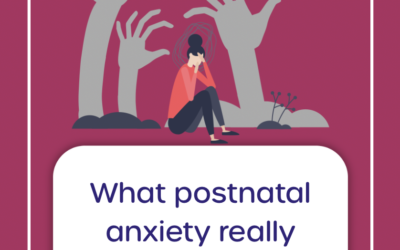If you’ve ever spent hours trying to settle your toddler at bedtime — only to have them pop back up minutes later — you’re not alone.
What if I told you that better sleep doesn’t start with a new bedtime routine, a different pillow, or even a later bedtime?
It starts with the entire day leading up to it.
Many parents focus heavily on what happens right before bed — and while a calm evening routine is important, the truth is that your child’s ability to sleep well is built hour by hour throughout the day.
Today, we’re diving into why how your toddler feels during the day shapes how they sleep at night — and simple shifts you can start making to see real results.
From the moment they wake up, toddlers are absorbing their environment.
- Is the day predictable or chaotic?
- Are transitions gentle or rushed?
- Are their big feelings acknowledged or brushed aside?
Their nervous systems are like tiny sponges, soaking up experiences. And when the day feels overwhelming — with high stimulation, emotional stress, or constant rushing — their bodies stay in a state of high alert.
By bedtime, instead of winding down, their little brains are still buzzing.
This can show up as:
- Difficulty falling asleep
- Frequent night wakings
- Early morning wakes
- Restless sleep cycles
When toddlers feel emotionally regulated, safe, and connected during the day, their nervous systems can relax, setting the stage for deeper, more restful sleep at night.
Emotional regulation is the ability to manage and express feelings appropriately.
For toddlers, who are still learning how to do this, the support they receive during the day is crucial.
When toddlers have big feelings that aren’t fully processed — whether it’s frustration, excitement, sadness, or even just overwhelm — those emotions don’t magically disappear.
Unprocessed feelings often surface at bedtime (when everything is quiet and there’s nowhere to distract the mind), leading to clinginess, resistance, or wake-ups in the middle of the night.
This is why calm, connected days are so important for calm, connected nights.
If you’re ready to move beyond quick fixes and truly support your toddler’s sleep at the root level, focus on these three daytime strategies:
Consistent Wake Times
Why it matters:
A predictable wake-up time helps regulate your toddler’s internal body clock (circadian rhythm). When their wake time floats later or earlier every day, it throws off their natural drive for sleep — leading to harder bedtimes and nighttime wakings.
How to do it:
- Choose a wake time that suits your family’s routine and stick to it within 15–30 minutes every day (yes, even weekends!).
- Open the curtains, get natural light exposure early, and offer breakfast shortly after waking to anchor their internal rhythm.
Example:
If you want bedtime to be around 7 PM, aim for a wake time around 6:30–7:00 AM.
Balanced Stimulation (Play vs. Downtime)
Why it matters:
Toddlers need a healthy mix of active play to burn energy and calm moments to prevent overstimulation. Constant go-go-go days without any quiet processing time can leave them wired and unable to relax later.
How to do it:
- Alternate periods of active play (running outside, playground time) with calm activities (reading, sensory play, cuddling).
- Build “quiet pockets” into your day — especially after busy outings or high-energy playdates.
- Watch for signs of overstimulation: zoning out, meltdowns, hyperactivity, or clinginess.
Example:
After a morning at the park, plan a cosy story time or some free, open-ended play at home before lunch and nap.
Evening Wind-Down
Why it matters:
The brain needs clear signals that sleep is coming. A predictable evening routine helps lower cortisol (the stress hormone) and encourages melatonin production (the sleepy hormone).
How to do it:
- Start the wind-down 60–90 minutes before bedtime.
- Turn off bright lights, screens, and loud activities.
- Keep the sequence of events predictable: bath, PJs, story, cuddle, bed.
- Focus on connection — calm, loving interactions are your best tool for emotional security.
Example:
After dinner, dim the lights, do a warm bath, choose two short stories, and end with a cuddle and a lullaby before bed.
Emma, a mum in our community, was desperate for help when her 2-year-old son Noah started waking multiple times a night.
No matter how strict she was about bedtime routines, nothing worked — and she felt like she was failing.
When we worked together, we shifted the focus away from “fixing bedtime” and looked at Noah’s whole day.
We made simple changes:
- Set a consistent wake time
- Added more downtime after nursery
- Created a soothing evening wind-down
Within two weeks, Noah’s sleep improved dramatically.
Emma said, “It was like magic — but it wasn’t magic. It was connection, rhythm, and understanding what he needed during the day to feel safe at night.”
If bedtime feels like a battlefield, or nights are filled with restless wake-ups, the answer might not be “later bedtime” or “cry it out.”
It might be in rethinking the entire flow of the day.
Calm, connected, and balanced days lead to calm, connected, and restful nights.
And you don’t have to figure it out alone.
Inside The Nest, you’ll find everything you need to transform your days (and nights):
- 1:1 sleep and parenting support
- A welcoming, non-judgmental community
- Access to monthly masterclasses, including Toddler Sleep & Emotional Regulation: Why Your Days Shape Your Nights
✨ Ready to make days calmer and nights easier?
👉 Join The Nest today
👉 Or book your 1:1 Sleep Support Session here
You and your little one deserve peaceful days and restful nights — and support is just a step away. 💛



0 Comments